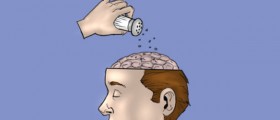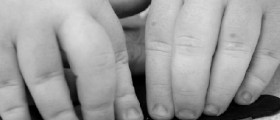Pathological liars are suffering from a disease and cannot control their lying. The disease cannot be specifically defined psychologically though. There is no specific treatment for pathological lying as it is usually present as a symptom of some other underlying condition such as attention deficit, obsessive-compulsive disorder, antisocial personality disorder, or hyperactivity disorder. Some studies have shown that pathological liars have a brain that is slightly different than the brain of normal human being who feels no urge for lying.
Pathological liars have a quarter more white matter in the prefrontal cortex of the brain than people who do not have psychological disorders. Lower amounts of white matter are associated with people who suffer from autism and are usually unable to tell lies. The conclusion is that excess amounts of white matter in the brain increase one’s urge and ability to lie.

- A total of 807 people were recruited (January to October of 2019) from various mental health forums, social media, and a university. Of those recruited, 623 completed the study. Participants responded to a lie frequency prompt, questionnaires about lying behavior, the Lying in Everyday Situations Scale, the Distress Questionnaire?5, and demographic questions.
- Of the participants, 13% indicated that they self? identified or that others had identified them as pathological liars (telling numerous lies each day for longer than 6 months).
- People who identified as pathological liars reported greater distress, impaired functioning, and more danger than people not considered pathological liars. Pathological lying seemed to be compulsive, with lies growing from an initial lie, and done for no apparent reason.
- Pathological lying exists in a small percentage of people, for whom it causes significant distress, impaired functioning, and danger.
- Pathological lying, distinct from normative lying and prolific lying, has a prevalence of 8%–13%.
Children become much more credible liars around the age of 10 and that is exactly the age at which the white matter gets developed, notably in the prefrontal cortex. Too much white matter usually leads to this condition commonly known as pathological lying. There are unfortunately no ideas on a possible way of treating this condition and no research has shown any results. The condition results from a specific structure of one’s brain and, just like autism, cannot be treated.
What can be done to help Pathological Liars?
In most cases, pathological liars suffer from some other medical condition that can be treated by certain types of medication. In order to treat the patient properly, the doctor must always be extremely accurate in diagnosing these underlying conditions, because the wrong type of medication could worsen the current condition.
The underlying conditions and personality disorders that pathological liars suffer from can be treated by psychiatric medications and cognitive behavioral therapy as well.
The treatment leads to an elimination of the underlying condition in order to stop the person from pathological lying. It is very important that the treated person complies with the therapy and the medications, although sometimes people with the antisocial disorder do not want to be treated.
Is there Hope for Pathological Liars?
A pathological liar must be committed to the therapy and have the will to take medications in order to be cured. The main issue is that liars can lie about taking their medication, the effect that medication has, and life in general so it can affect the efficiency of the therapy. No treatment will work for all the patients, but luckily enough, some of them have been cured successfully.

















Your thoughts on this
Loading...